The term Bema has several different meanings. The word is most commonly a synonym for the Sanctuary, especially in the East. However, it can also refer to:
1. The raised, gated area which projects from the Sanctuary into the nave called the schola cantorum
2. A separate raised platform for clergy which, in antiquity–particularly in Syria–was located in the middle of the nave and completely separated from the Sanctuary (like the bema of a synagogue, or a dislocated schola cantorum)
3. The Ambo
4. The Pulpit (more rarely)
All these meanings stem from the original definition of the Greek word Bema (βήμα): a raised platform, or tribune, for a speaker or, more importantly, for the official seat of a judge.
In this passage from St. Germanus, he is using the term to mean the Sanctuary, the whole raised area reserved for clergy, with a particular emphasis on the area which contains the bishop’s throne at the back of the apse. He states:
The bema is a concave place, a throne on which Christ, the king of all, presides with His apostles, as He says to them: “You shall sit on thrones judging the twelve tribes of Israel” (Mt 19:28). It points to the second coming, when he will come sitting on the throne of glory to judge the world, as the prophet says: “Thrones were set for judgment over the house of David” (Ps 121:5)
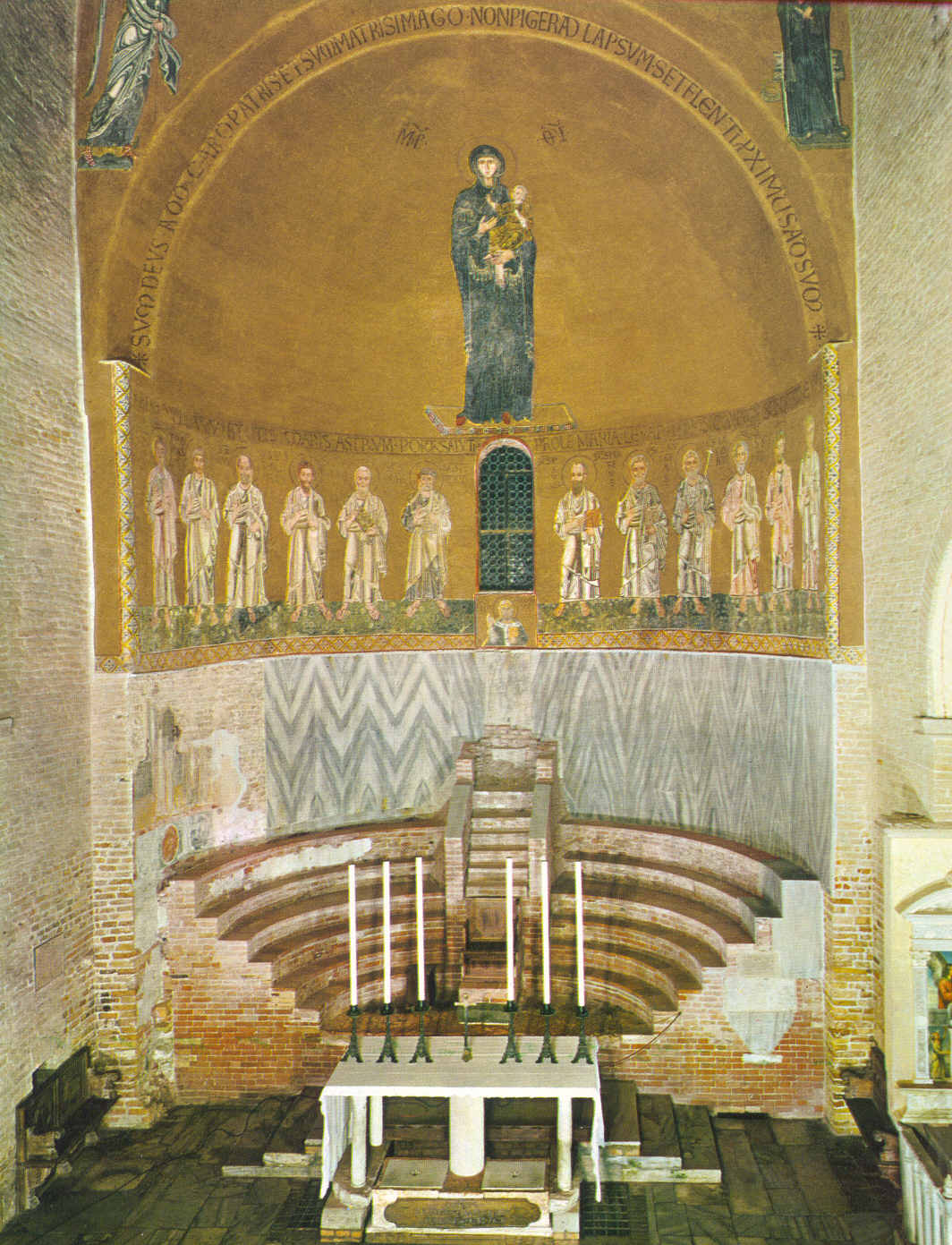
The apse of the cathedral in Torcello, near Venice. Note the prominent cathedra and surrounding amphitheater, or synthronon, for the officiating bishop and his assistants. Above, Christ is enthroned in the arms of the Blessed Virgin, His Apostles arrayed like supreme court justices to either side.
(Image source)
St. Germanus shows us that there is a second meaning to the architectural element that is the Sanctuary. We have already seen that the Sanctuary looks back in time and makes present the holy tomb of Christ. Now in this passage, St. Germanus shows that it also looks forward in time and makes present the Judgment Seat of Christ. It looks forward both to the end of our own lives when we shall face our Particular Judgment, and to the end of time when we shall face the General Judgment.
There is, of course, a foreshadowing of this architectural element in the Temple at Jerusalem and in the synagogues which imitated it. Once every seven years, in the feast of tabernacles, an elevated platform with a throne for the King was erected in the Women’s Court of the Temple. From the throne, the King would read from the Torah the law against which the actions of all would be judged. Under the New Dispensation, Christ is King, so the throne and judgment seat is naturally moved into the Holy of Holies.
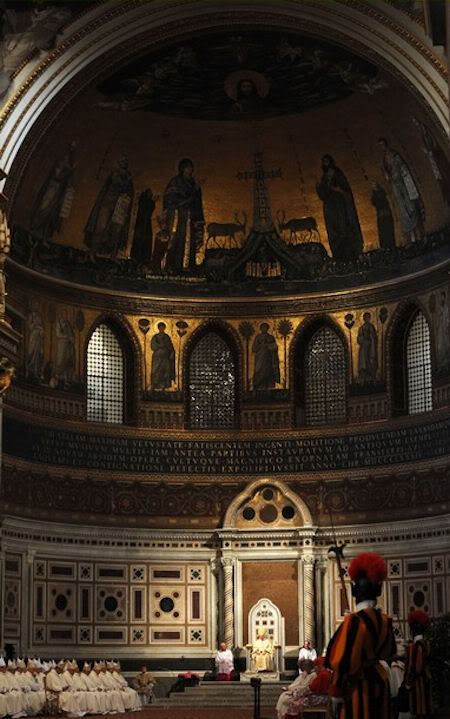
The Bema at St. John Lateran, the Alter Christus, or Other Christ, presiding. St. Germanus’s cathedral the Hagia Sophia would have had a similar throne.
(Image source)
The Bema is also foreshadowed in the Royal Stoa of the Temple at Jerusalem. This building, located on the southern side of the Temple Mount complex, was a basilica with, believe it or not, an apse at it’s eastern end. The Sanhedrin sat in that apsewhen they heard cases. It was built by Herod and modeled on the pagan Roman basilica, which also served as a court of law, the judgment seat in the apse.
The Eastern rites have continued the tradition of featuring a bishop’s throne and synthronon at the rear of the apse, even in parish churches. Adrian Fortescue, in his book The Orthodox Eastern Church, was moved to write:
The principle of having the bishop’s throne in every church of his diocese, which waits till he comes to fill it, is again one of the very beautiful and right practices which the comparative conservatism of the Orthodox Church has kept. It is true that the way in which she clings to one stage of development is altogether unjustifiable theologically, but it results in a number of very curious and picturesque remnants of a past age, which exist only in her services. Nothing in the world is more dead than the Empire that fell with Constantine XII, and yet its ghost still lingers around the Byzantine altars.
The Orthodox Eastern Church
In Western cathedrals, the bishop’s cathedra has moved to the side where it is not obscured by the much more elaborate altar than is usually found in the East. And of course, such a move is absolutely unavoidable when, out of practical necessity or other considerations, there is no apse and hence no space behind the altar. Nevertheless, the Sanctuary as a whole in the West remains raised, usually three or five steps, and the seat retains its visual prominence. Its elevation reminds us that Christ is not only Savior, but also Judge.
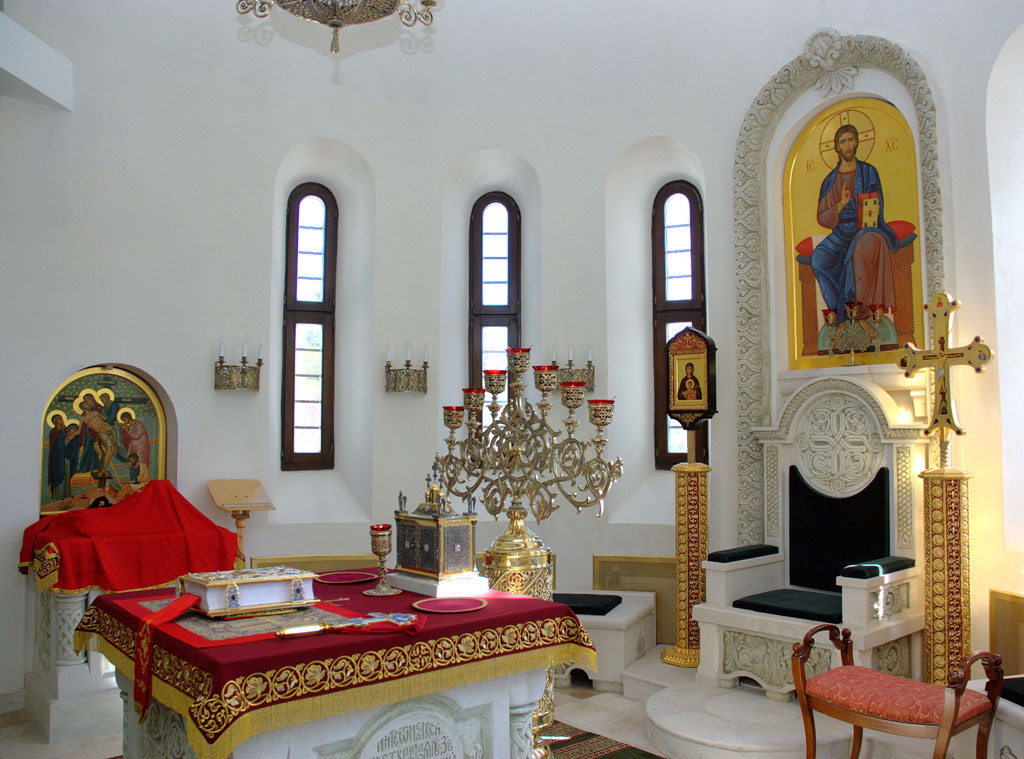
The Bema–altar, throne, and synthranon–at St. Vladimir’s Skete at the Valaam Monastery
(Image source)

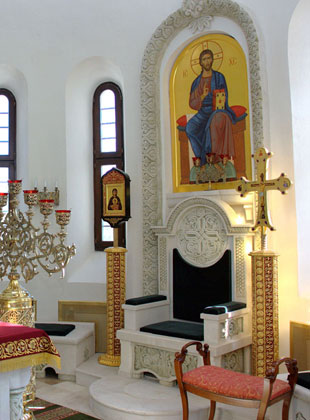
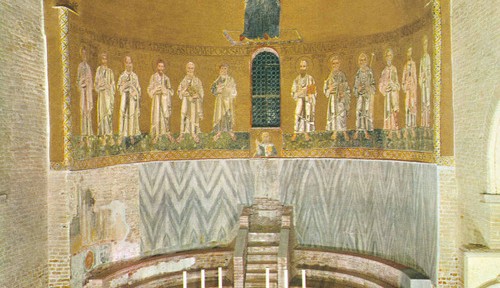
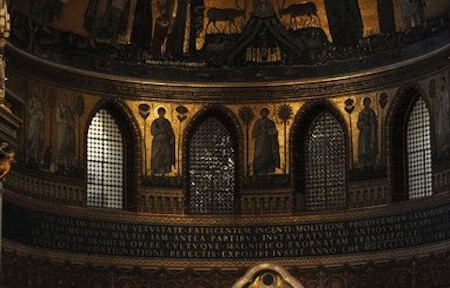
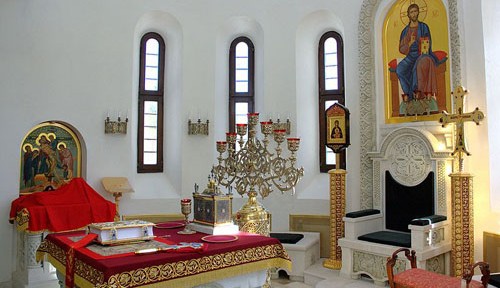
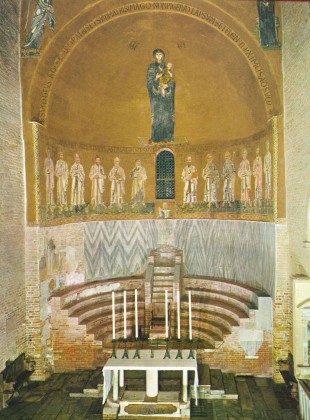
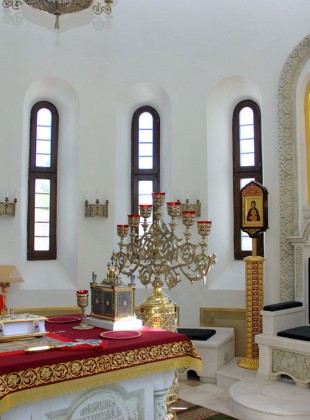
Do you have more pictures of The apse of the cathedral, which has taken so, that we can see the domepainting as 3-D-picture. Madonnapainting goes curve.
I notice some RC churches are introducing the bema in the center of the church with the people seated around it. The ambo at one end and the holy table at the other. If the Liturgy of the Hours is to be restored in parishes as a daily or weekly practice (a long over due practice too) then a bema of this type makes a lot of sense. Antiphonal seating enhances the singing of the psalms, and the eucharistic liturgy can be conducted in a more intimate setting. With the priest celebrating towards the people or “ad apsidem”, if there is one.
This arrangement is ideal for smaller, square-shaped, Greek cross, or circular churches. Which I believe, thanks to Eastern Orthodox Bzantine influence, will continue to be the most popular and efficient option for most parishes. . Hopefully, in time, RC churches will get rid of their pews, place a few benches or chairs with kneelers along the walls, and allow most congegants to stand or move closer in towards the altar and ambo during liturgies. In Europe one often finds this arrangement with children’s masses–gathering about the priest and the altar. “and a child shall lead them”.